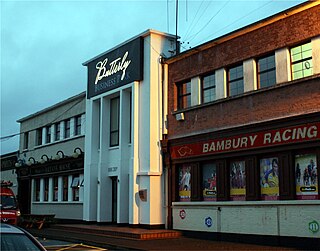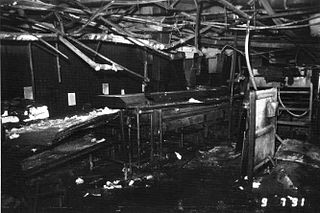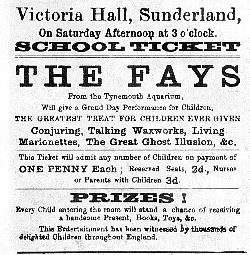
Hogmanay is the Scots word for the last day of the old year and is synonymous with the celebration of the New Year in the Scottish manner. It is normally followed by further celebration on the morning of New Year's Day and, in some cases, 2 January—a Scottish bank holiday. In a few contexts, the word Hogmanay is used more loosely to describe the entire period consisting of the last few days of the old year and the first few days of the new year. For instance, not all events held under the banner of Edinburgh's Hogmanay take place on 31 December.

Braehead is a commercial development located at the former site of Braehead Power Station in Renfrew on the south bank of the River Clyde in Renfrew, Renfrewshire. It is particularly notable for its large shopping centre, arena and leisure facilities.

The Beverly Hills Supper Club fire in Southgate, Kentucky, is the seventh deadliest nightclub fire in history. It occurred on the night of May 28, 1977, during the Memorial Day holiday weekend. A total of 165 people died and more than 200 were injured as a result of the blaze.

The Bradford City stadium fire occurred during a Football League Third Division match on Saturday, 11 May 1985 at the Valley Parade stadium in Bradford, West Yorkshire, England, killing 56 spectators and injuring at least 265. The stadium was known for its antiquated design and facilities, which included the wooden roof of the main stand. Previous warnings had also been given about a major build-up of litter in the cavity below the seats in the stand. The stand had been officially condemned and was due to be replaced with a steel structure after the season ended.

The Iroquois Theatre fire was a catastrophic building fire in Chicago, Illinois, that broke out on December 30, 1903 during a performance attended by 1,700 people. The fire caused 602 deaths and 250 non-fatal injuries. It ranks as the worst theater fire in the United States, surpassing the carnage of the Brooklyn Theatre fire of 1876, which claimed at least 278 lives.

The 1985 Manchester Airport disaster occurred when British Airtours Flight 28M, an international passenger flight, was en-route from Manchester Airport to Corfu International Airport and caught fire on takeoff on 22 August, 1985. The accident resulted in 55 fatalities.

A crash bar is a type of door opening mechanism which allows users to open a door by pushing a bar. While originally conceived as a way to prevent crowd crushing in an emergency, crash bars are now used as the primary door opening mechanism in many commercial buildings.

The Stardust fire was a fatal fire which took place at the Stardust nightclub in Artane, Dublin, Ireland, in the early hours of 14 February 1981. More than 800 people were attending a disco there, of whom 48 died and 214 were injured as a result of the fire; in later years suicides of survivors and family members were also linked to the event.
The Accra Sport Stadium disaster occurred at the Ohene Djan Stadium in Accra, Ghana, on 9 May 2001. It killed 126 people, making it the worst stadium disaster to have ever taken place in Africa. It is also the third-deadliest disaster in the history of association football behind the Estadio Nacional and Kanjuruhan Stadium disasters.

The Rhythm Club fire was a fire in a dance hall in Natchez, Mississippi on the night of April 23, 1940, which killed 209 people and severely injured many others. Hundreds of people were trapped inside the building. At the time, it was the second deadliest building fire in the history of the nation. It is now ranked as the fourth deadliest assembly and club fire in U.S. history.

The Laurier Palace Theatre fire, sometimes known as the Saddest fire or the Laurier Palace Theatre crush, occurred in a movie theatre in Montreal, Quebec, on January 9, 1927, killing 78 people. The theatre was located at 3215 Saint Catherine Street East, just east of Dézéry St.

On September 3, 1991, an industrial fire caused by a failed improvised repair to a hydraulic line destroyed the Imperial Food Products chicken processing plant in Hamlet, North Carolina. Despite three previous fires in 11 years of operation, the plant had never received a safety inspection. The fire killed 25 people and injured 54, many of whom were unable to escape due to locked exits. It was the second deadliest industrial disaster in North Carolina's history.

The Victoria Hall disaster occurred on 16 June 1883 at the Victoria Hall in Sunderland, England, when the distribution of free toys caused a crowd crush resulting in 183 children to be crushed to death due to compressive asphyxia.

The Uphaar Cinema fire was one of the worst fire tragedies in recent Indian history. The fire started on Friday, 13 June 1997 at Uphaar Cinema in Green Park, Delhi during the three o'clock screening of the movie Border. Fifty-nine people were trapped inside and died of asphyxiation (suffocation), while 103 were seriously injured in the resulting stampede.

Paolo Giovanni Nutini is a Scottish singer-songwriter from Paisley. Nutini's debut album, These Streets (2006), peaked at number three on the UK Albums Chart. Its follow-up, Sunny Side Up (2009), debuted at number one on the UK Albums Chart. Both albums have been certified quintuple platinum by the British Phonographic Industry. Five years later, Nutini released his third studio album, Caustic Love, in April 2014, which debuted at number one on the UK Album Charts and was certified platinum by the BPI. In July 2022, he released his fourth album, Last Night in the Bittersweet.
Cinema Statuto was a movie theater located in Turin, Italy, when on 13 February 1983, at 18:15, during the projection of La Chèvre, a fire caused the death of 64 people as a result of smoke inhalation. According to statements by Raimondo Capella, the owner of the cinema, the flames spread from an old curtain. This was the largest disaster to have occurred after World War II in Turin.

The Club Cinq-Sept fire was a major blaze at a nightclub just outside Saint-Laurent-du-Pont, Isère, France, on Sunday, 1 November 1970. The fire claimed the lives of 146 people, almost all of whom were aged between 17 and 30. The scale of the disaster shocked the country. Subsequent official enquiries revealed a catalogue of shortcomings, oversights and evasions with regard to fire safety at both local and département level. Criminal charges were brought against a number of people; some received suspended jail sentences.

The Estadio Nacional disaster took place on 24 May 1964 at the Estadio Nacional in Lima, Peru, during a match between Peru and Argentina. An unpopular decision by the referee outraged the Peruvian fans, who invaded the pitch. Police retaliated by firing tear gas into the crowd, causing a mass exodus. The deaths mainly occurred from people suffering from internal hemorrhaging or asphyxiation from the crushing against the steel shutters that led down to the street. The incident is considered the worst disaster in the history of association football.

The 1971 Ibrox disaster, also known as the Second Ibrox Disaster, was a crush among the crowd at an Old Firm football game, which led to 66 deaths and more than 200 injuries. It happened on 2 January 1971 in an exit stairway at Ibrox Park in Glasgow, Scotland. It was the worst football disaster until the Bradford City stadium fire in Bradford, England, in 1985. This was followed by 97 deaths in the Hillsborough disaster in Sheffield, England, in 1989.
Events from the year 1929 in Scotland.



















